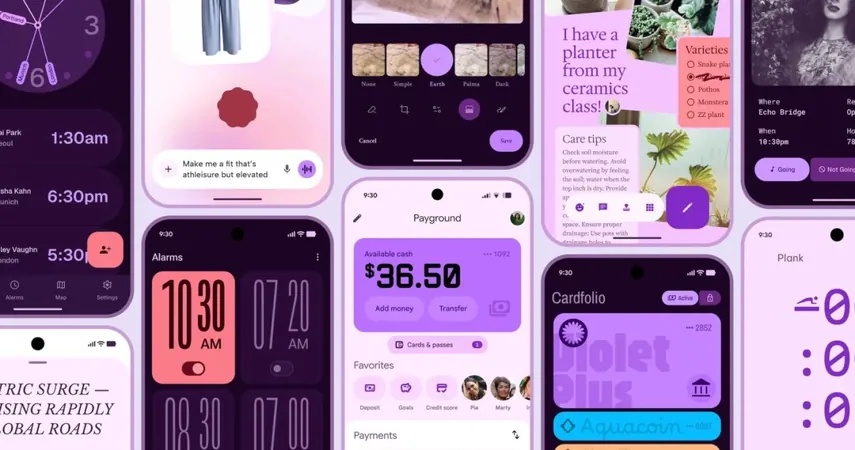
Android's Bold New Look: Can It Compete with the iPhone?
2025-05-07
Author: Jessica Wong
A Splash of Color for Gen Z
Android has unveiled a vibrant new design aimed squarely at Gen Z, featuring a playful palette of pinks, purples, and corals. This fresh aesthetic is a clear departure from the more subdued options available before, promising a younger, more energetic vibe. But is this overhaul enough to woo Gen Z away from their beloved iPhones?
The iPhone Dominance Challenge
Despite Android's status as the world's leading mobile operating system, the iPhone reigns supreme in the U.S., particularly among younger users. According to a recent survey from Piper Sandler, a staggering 88% of teens own iPhones, and a Wall Street Journal article highlighted how Android users often face ridicule in school for their choice of device. Clearly, Android has its work cut out for it.
Material Three: The Evolution of Android's Interface
The new design builds on Google's previous interface, Material You, launched with Android 12. The latest iteration, dubbed Material Three, promotes extensive customization, allowing users to sync their color palette with their wallpaper. This trend resonates with Gen Z's desire for personalized tech experiences, yet will it challenge the iPhone's stronghold?
Research-Backed Youth Appeal
According to leaks, Google conducted 46 studies involving over 18,000 participants to perfect this new design. The feedback was largely positive, particularly from younger users, who rated the designs highly for visual appeal and intent to use. However, Google's attempt at youth-centric design raises questions on whether such metrics actually translate into real-world behavior.
Can A New Look Really Make A Difference?
Despite the eye-catching updates, Android faces a fundamental hurdle: the ingrained popularity of iMessage, which keeps users locked into the Apple ecosystem. The green bubbles in group chats remind Android users that they’re still outsiders in a predominantly iOS world. Even with improved messaging options via RCS, the gap remains.
What Lies Ahead for Android?
While Material Three is a step in the right direction, the lasting impact of Apple's ecosystem looms large. If Apple were to open up iMessage and FaceTime for all devices, it could dramatically shift the landscape and potentially bolster Android's appeal. Ultimately, inventive designs alone may not be enough for Google to penetrate iPhone's tight grip on the youthful demographic.
Conclusion: It's More Than Just A Facelift
The vibrant new aesthetics of Android are refreshing and align with modern tastes, but whether they can effectively woo Gen Z away from iPhones remains uncertain. Without addressing fundamental ecosystem issues, Google may find that even the best designs cannot overcome the loyalty and social pressures of the iPhone.


 Brasil (PT)
Brasil (PT)
 Canada (EN)
Canada (EN)
 Chile (ES)
Chile (ES)
 Česko (CS)
Česko (CS)
 대한민국 (KO)
대한민국 (KO)
 España (ES)
España (ES)
 France (FR)
France (FR)
 Hong Kong (EN)
Hong Kong (EN)
 Italia (IT)
Italia (IT)
 日本 (JA)
日本 (JA)
 Magyarország (HU)
Magyarország (HU)
 Norge (NO)
Norge (NO)
 Polska (PL)
Polska (PL)
 Schweiz (DE)
Schweiz (DE)
 Singapore (EN)
Singapore (EN)
 Sverige (SV)
Sverige (SV)
 Suomi (FI)
Suomi (FI)
 Türkiye (TR)
Türkiye (TR)
 الإمارات العربية المتحدة (AR)
الإمارات العربية المتحدة (AR)